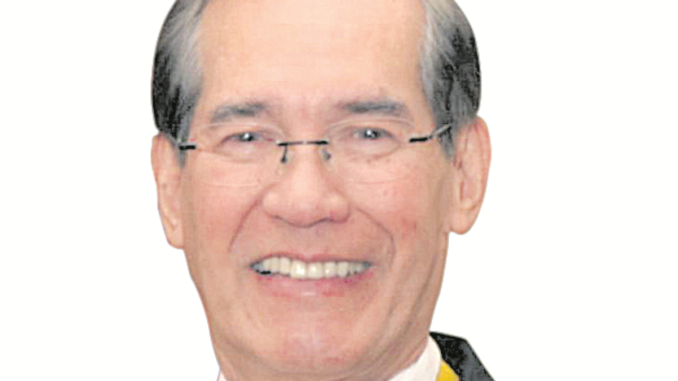
THE last week of September is a memorable one for the maritime world, as we mark the annual National Seafarers Day (NSD) as well as the National Maritime Week.
The 29h NSD was observed this year on September 29, with the theme “Marinong Filipino: Ligtas na Paglalayag!”
President Fidel Ramos proclaimed August 18 as NSD in 1996. A year later, the occasion was moved to the last Sunday of September.
The proclamation aimed to underscore the vital role of Filipino seafarers in the continued rise of the Philippines as a maritime country.
That NSD happens to fall on National Maritime Week (NMW) is no coincidence. NMW is held every last week of September. Its observance is spearheaded alternately by the Maritime Industry Authority, Philippine Coast Guard (PCG) and Philippine Ports Authority. This year, NMW ran from September 22 to September 29 with activities that included International Coastal Cleanup Day, an ecumenical Mass at the PCG grounds followed by wreath and flower-throwing activities in memory of deceased seafarers and fishers, as well as those who perished or are missing at sea; a flag-raising ceremony at the Independence Flagpole of Rizal Park; an oratorical and art competition among students from different maritime schools nationwide; a mental health awareness activity; and a maritime safety conference focusing on the theme “Navigating the future: Safety first!”
Although the festivities happened all in one week, our awareness of the crucial role of Filipino seafarers is something that should be in our consciousness at all times. In 2023, Filipino seafarers deployed reached 578,626, with dollar remittances amounting to more than $6 billion. The sector’s remittances made up at least 20 percent of the total overseas Filipino workers dollar remittances that amounted to over $33 billion in 2023.
The life of a seafarer is often idealized as one of adventure and exploration. But beneath this rose-colored image is a reality replete with challenges and hardships. Danish author Martin Andersen Nexø characterized the sea as a “wet and unstable world in which humans are powerful agents yet also increasingly impotent creatures” who have to endure harsh working conditions, long hours, the risk of piracy and other security threats, which remain to be clear and present dangers, as demonstrated by the recent attacks of Houthi rebels in the Red Sea. The fear and anxiety caused by these threats can be debilitating, affecting the morale and mental health of the crew.
A less tangible, but no less real, challenge that seafarers face is isolation. Spending months at a time away from family and friends can lead to anxiety and loneliness. While modern technologies have made online connection possible, video calls can never take the place of face-to-face communication.
Shipping is acknowledged as the most international of all the world’s great industries. For this reason, it is recognized that the best way of improving safety at sea is by developing and adopting international regulations that are observed by all shipping nations.
This is the reason why one of IMO’s priorities when it was established in 1959 was to adopt a new version of the International Convention for the Safety of Life at Sea, the most important of all treaties dealing with maritime safety.
IMO has also adopted international collision regulations and global standards for seafarers, as well as international conventions and codes involving search and rescue, the facilitation of international maritime traffic, among others.
IMO has also issued a series of resolutions and codes, including guidelines on navigation issues and performance standards for shipborne navigational and radio communication equipment.
Nexø noted that “philosophers have a name for the particular intelligence that characterizes persons who excel in action: practical reason. The sailor, especially the sailor who knew how to navigate, was a hero because of his practical reason.”
And practical reason, when complemented and augmented by knowledge gained from continuous learning, is a formidable asset. The search for ways to enhance safety at sea continues unabated, for the benefit not only of our seafarers, but of us, whose needs they meet in spite of the risks they face. Let us not wait for another tragic incident before we act to prevent danger. A Chinese proverb goes, “Dig the well before you are thirsty,” an adage that we should live by.


Be the first to comment